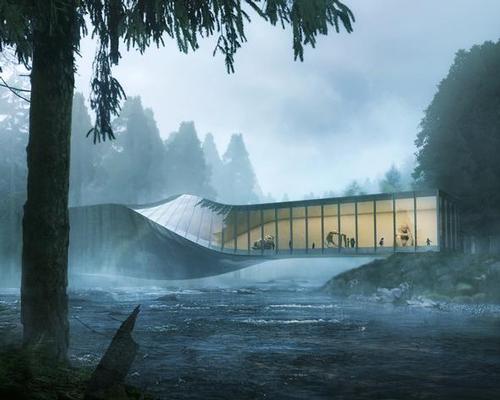15 Oct 2015
BIG designs sinuous art museum to twist across a Norwegian river
BY Kim Megson

Bjarke Ingels Group (BIG) have designed a new art gallery for a Norwegian sculpture park which will twist across a river below.
The firm’s founding partner, Bjarke Ingels, described the design as the group’s “first experiment with social infrastructure – a building that serves as a bridge – or a cultural institution that serves as a piece of infrastructure.”
The 1,400sq m (15,000sq ft) museum will be the new centrepoint of the existing Kistefos Sculpture Park in the municipality of Jevnaker, north of Oslo, which exhibits work by acclaimed artists including Anish Kapoor and Olafur Eliasson.
Speaking exclusively to CLAD, BIG partner David Zahle said: “From the first time I set foot on the soil of Kistefos Sculpture Park, I was struck by the beauty of the landscape. The sculptures reflect and engage in the topography and the river in a truly magnificent way. Being able to contribute to the landscape of buildings, art and nature is a true pleasure.”
The new museum will provide an indoor space for several large-scale sculptures and installations. It will better connect the park, which is divided by the river, by creating one simple loop for visitors to follow.
BIG’s bridge – developed in collaboration with structural engineering firm AKT II, British designer Max Fordham and construction consultancy Davis Langdon – will cross the River Randselva, twisting as it does so in order for the structure to connect the lower-lying forested area on the south side with the more elevated north bank. The effect will be achieved by creating a fanning staircase inside, which will double as an informal seating area and performance space.
The non-glazed portion of the structure will be constructed of brushed stainless steel, while large insulated glass panels will use a reflective UV film to keep out any light which could damage the art. A large open gallery in the north side will provide views of the river, the surrounding forests and a historic paper mill nearby.
Ingels described himself as “instantly fascinated” by this dramatic surrounding landscape, with its combination of natural, industrial and artistic features. He said: “We approached the design for a new museum as an opportunity to create a masterplan for these three landscapes … we proposed a raw and simple form that would respond to the challenges of the landscape: a building, sculpture, and bridge – all in one.”
Echoing those comments, Zahle told CLAD: "Working on the borderline between infrastructure, art and architecture has been very inspiring. It combines three of our biggest interests into one exciting field of social infrastructure."
Construction is to begin in 2016 and the museum will be completed in early 2019.
Close Window